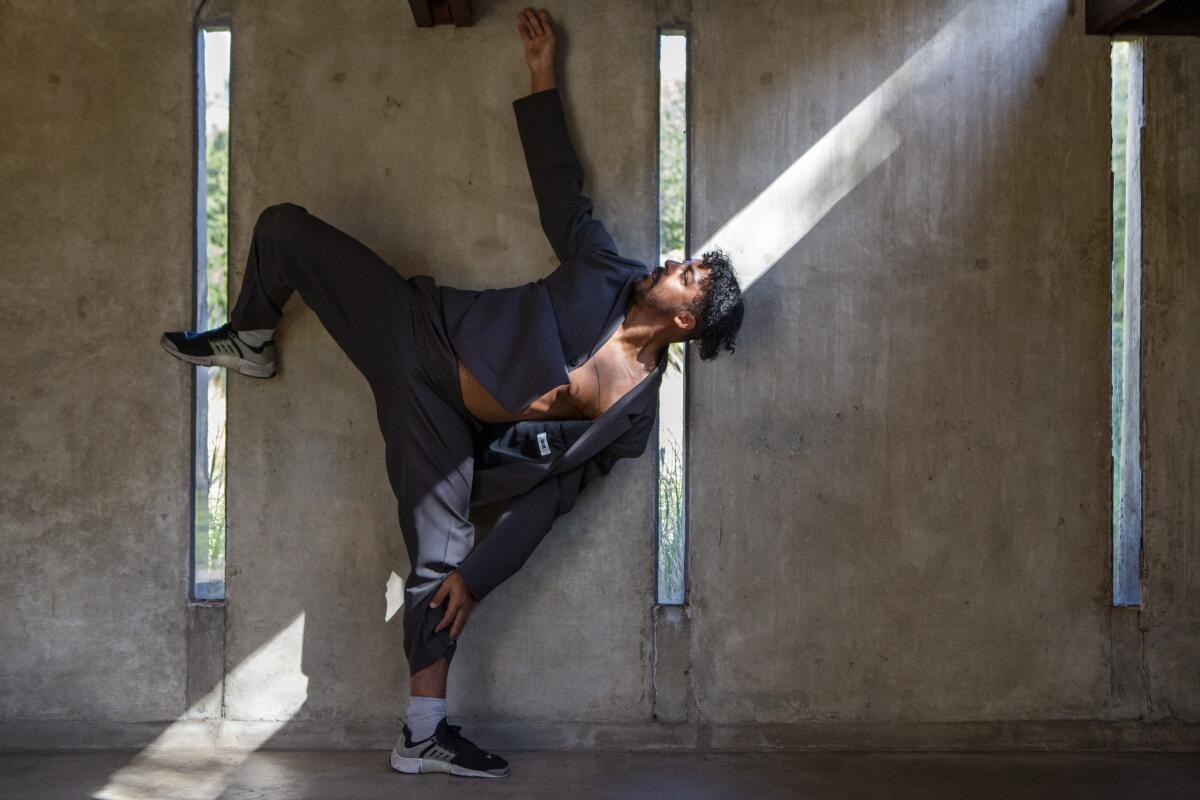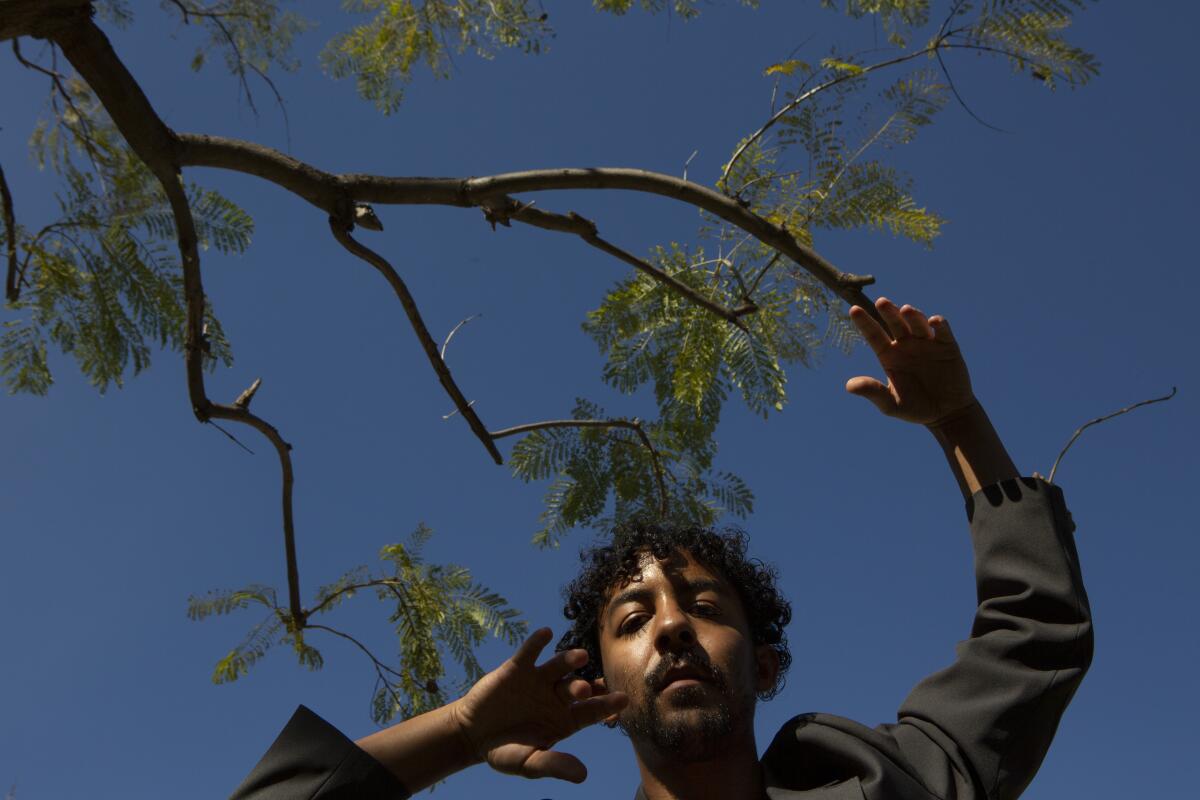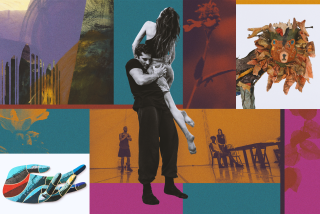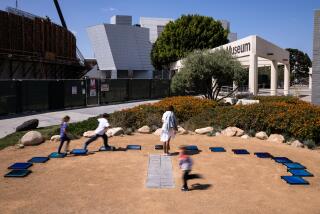COVID-19 closed his dance piece. But 6 months later, a triumphant return

For Chris Emile, the early March premiere of his first solo exhibition and series of performances at the MAK Center for Art and Architecture was a success.
The show, “Amend,” explored Black masculinity and followed the life of one man, from childhood through middle age, with a cast of three dancers. Audiences were guided through the landmark home of the late modernist architect Rudolph Schindler, a space transformed through movement, archival footage, sculpture and sound.
“People seemed very impacted, and just seemed like they walked away really touched,” the choreographer said.
About a week after the first performance, though, the show abruptly went on hiatus as the COVID-19 pandemic forced the state into lockdown. For many in the audience, “Amend” was also their last live performance before the world changed.
“That also kind of felt special, that it was something I knew that people could kind of hold on to during this time,” Emile said.
Six months later, “Amend” has returned with performances (already sold out) this month. The MAK Center’s new COVID-19 guidelines allow only 10 people to view each performance. Attendees are required to sign a waiver stating that they aren’t experiencing COVID symptoms and acknowledging their risk of exposure.
Emile was anxious about how people would respond to the reopening, saying, “Sometimes I’m very in the mood to be inspired and I want to go research and see things online and watch performances. ... There’s also times where I don’t want to see anything. I want to just stay in my house and look at the wall.”

The recent months have been challenging as an artist who thrives off the energy of live performance.
“It’s been a paradigm shift of just, ‘How do I do what I do in person — online — especially because of platforms like Instagram,’” Emile said. “‘How do you impact people the same way without putting out another video that just feels redundant.’”
The new shows sold out within a day of being announced. The 32-year-old choreographer is known for cultivating the type of supporters whom traditional dance companies desperately struggle to reach: young, hip, people of color.
Featuring a mix of choreography and improvisational dance, “Amend” is newly invigorated, Emile said.
“The work is already in conversation with Black Lives Matter and the inequality of Black people, so to have this new context of white people finally admitting that there is racism — there’s a new level of the performers tapping into what that feels like as a Black man now.”
“Amend” began as a film project about masculinity with director Jackson Kroopf.
“We both had similar experiences growing up, just feeling a bit strange in our bodies, specifically around masculinity and not really identifying with what it is to be masculine in society,” Emile said.
When choreographer Jacob Jonas posted a photo of a black dancer with a white police officer to his 148,000 followers, some called for accountability.
Last year, USC invited Emile and other choreographers to search through its digital archives and propose a work. Emile was drawn to recordings about government policies including welfare work requirements and redlining — the 1930s federal housing policy that reinforced segregation by refusing to insure mortgages in Black neighborhoods.

Emile used the clips to inform “Amend,” a work about “this man’s life and all of the societal and governmental policies that have been put into place to show what a Black man, specifically in Los Angeles, what his outcome is now.”
The exhibition and performances align with his mission: creating work in nontraditional spaces that tackles race and other social issues.
The goal is always to appeal to communities beyond the city’s white, wealthy dance lovers, “because I hadn’t really seen that in Los Angeles, and I hadn’t seen Black people doing it either,” Emile said.
More to Read
The biggest entertainment stories
Get our big stories about Hollywood, film, television, music, arts, culture and more right in your inbox as soon as they publish.
You may occasionally receive promotional content from the Los Angeles Times.











